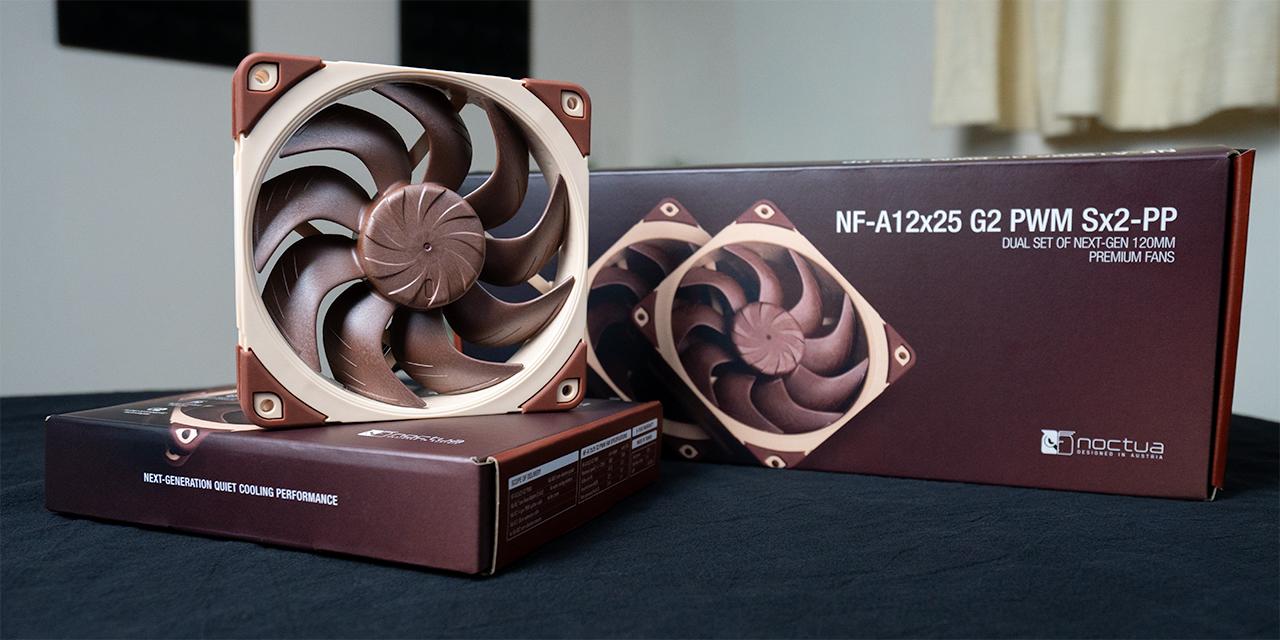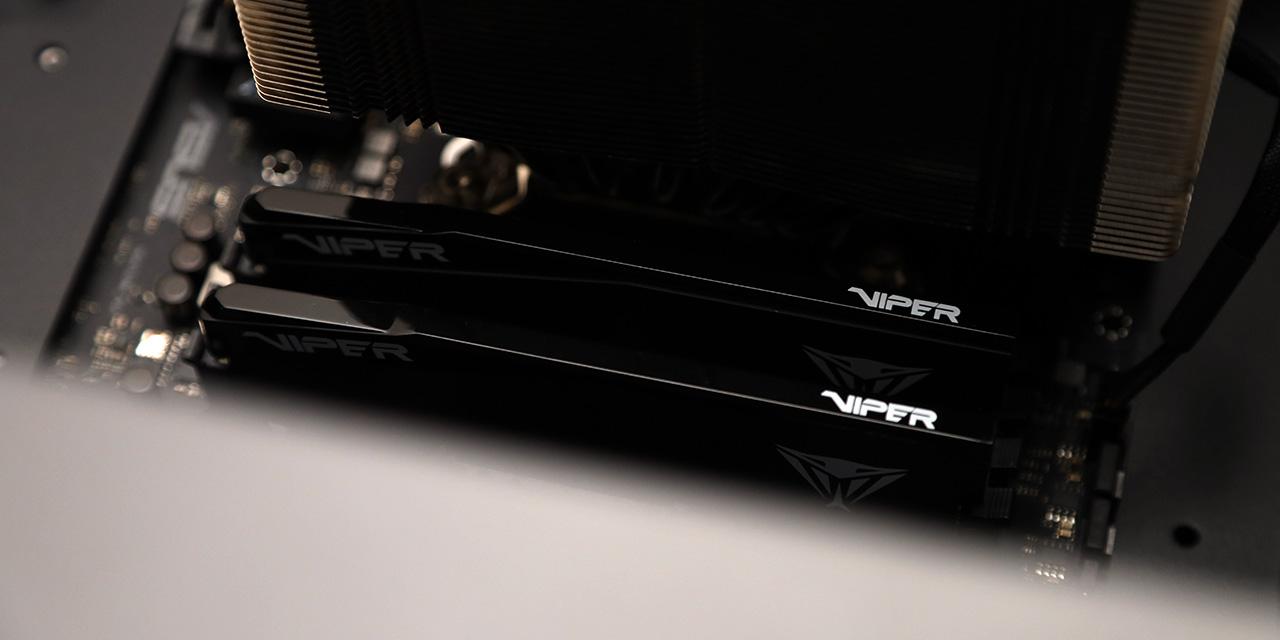Page 2 - A Closer Look, Installation, Test System
Patriot's Viper SODIMM PC3-12800 2x8GB uses a low profile, thin, dark grey/black-colored aluminum heatspreader. It is a pretty well adapted version of its desktop counterpart, and I found that quite interesting to look at first glance. What do I mean by "adapted version"? Well, while it is clearly inspired by the design of the fully sized modules, it is not a straight up copy. Instead, the design is changed accordingly to fit the smaller context. As far as material is concerned, aluminum is lightweight, and serves as a decent heat conductor. Considering how G.Skill and Kingston both resorted to using stickers in place of real metal, I am glad Patriot stuck to the original formula, except they made the heatspreaders thinner for better compatibility. Best of both worlds? We will see. Obviously, the usage of heatspreaders in laptop memory more marketing than engineering; while they do undeniably serve a purpose in dissipating heat, no SODIMM specified at 1.35V like the Viper SODIMM can generate enough heat to actually make use of this in a beneficial manner -- considering you can't even overclock your laptop in the first place. That said, I am a sucker for cool looking RAM, and so are a lot of people. Patriot says that they included the shield to "dress it more appropriately" as a performance part, which I will have to agree. While I am not aware of anyone who owns a laptop with a windowed chassis, this is besides the point, haha.
Back to what we have, the size of the heatspreaders on the Patriot Viper SODIMM PC3-12800 2x8GB laptop modules is the same for both sides, but the design is not. This makes sense, because memory ICs reside on both sides of the PCB, and for pure appearance purposes, you will want to cover all of them. A horizontal black band with blue stripes makes its way around the heatspreader, while the background is dark grey for a sophisticated appearance. On one side of the module, we have Patriot's Viper branding in stylized form. Meanwhile, a specification label covers over the design pattern on the other side. It lists information such as the kit name (PV316G160LC9SK), frequency (1600MHz), capacity (16GB per set), and voltage (1.35V).
Each 8GB module of the Patriot Viper SODIMM PC3-12800 2x8GB kit features a standard green PCB with a total of eight 1024MB integrated chips on both sides -- eight on each side of the board -- for maximum capacity. Patriot's modules are programmed to run at 1.35V, 800MHz actual clock (DDR3-1600/PC3-12800) with 9-9-9-24 latencies. The 1.35V complies with the latest DDR3L specification. If you have an older laptop designed for 1.5V RAM, you should not experience any problems. Either you RAM will operate at 1.35V if your laptop is new enough, or it will just supply 1.5V to the modules, which is also acceptable. These are pretty standard specifications for laptop memory operating at this speed.
If you've never installed laptop memory before, it is quite a simple job. For those who are experienced, you will understand that every laptop is designed differently, therefore the procedure for memory installation may also vary from a thirty second job to... well, a five minute job at most. My previous Lenovo ThinkPad T400's memory modules were located underneath the palm rest; requiring the removal of four screws at the bottom of the laptop. This is probably as hard as it gets. Meanwhile, the Lenovo ThinkPad T420 I am using for testing today has one memory behind a cover at the bottom; with the second module located underneath the keyboard. This simple procedure required only two screws to be removed in total, and it takes no more than two minutes. The rest of the procedure involves unlatching the clips and removing the old SODIMMs, and installation is simply done by sliding the new RAM into their slot until it locks. Since the Patriot Viper SODIMM has really thin heatspreaders, unless you are trying to fit them into something design for DDR2, it is quite literally impossible for you to experience any fitment issues. As uneventful as my installation went, let us fire up some benchmarks for the tests.
For our benchmarks, our test system is configured as follows:
Laptop Model: Lenovo ThinkPad T420 (BIOS Revision 1.22)
CPU: Intel Core i5-2520M (Sandy Bridge 2.50GHz, Turbo Boost 3.00GHz, 3MB L3, 1333MHz FSB)
Chipset: Intel QM67
Display: 14" AUO LED backlit LCD @ 1600x900
Graphics: NVIDIA Quadro NVS 4200M 1GB with Optimus
Storage: Kingston HyperX 3K 240GB
Wireless: Intel Centrino Ultimate-N 6300 AGN
Operating System: Microsoft Windows 7 Professional x64 SP1
Compared Hardware:
- Patriot Viper SODIMM PC3-12800 2x8GB (DDR3L-1600) @ 9-9-9-24
- G.Skill F3-10666CL9D-8GBSQ 2x4GB (DDR3-1333) @ 9-9-9-24
- G.Skill F3-8500CL7D-8GBSQ 2x4GB (DDR3-1066) @ 7-7-7-20
- G.Skill Ripjaws F3-1600C9D-16GRSL 2x8GB (DDR3L-1600) @ 9-9-9-28
- Kingston HyperX PnP KHX1600C9S3P1K2/8G 2x4GB (DDR3-1600) @ 9-9-9-27
- Kingston HyperX PnP KHX16S9P1K2/16 2x8GB (DDR3-1600) @ 9-9-9-27
All tests were run with the NVIDIA Quadro NVS 4200M 1GB dedicated graphics card active, and the laptop's power scheme set to "High Performance" to obtain the most accurate benchmark scores.
Page Index
1. Introduction, Packaging, Specifications
2. A Closer Look, Installation, Test System
3. Benchmark: AIDA64 CPU
4. Benchmark: AIDA64 FPU
5. Benchmark: AIDA64 Memory
6. Benchmark: PCMark 7
7. Benchmark: 3DMark 11
8. Benchmark: PassMark PerformanceTest 7.0
9. Benchmark: SuperPI 1M, Cinebench R11.5
10. Conclusion





